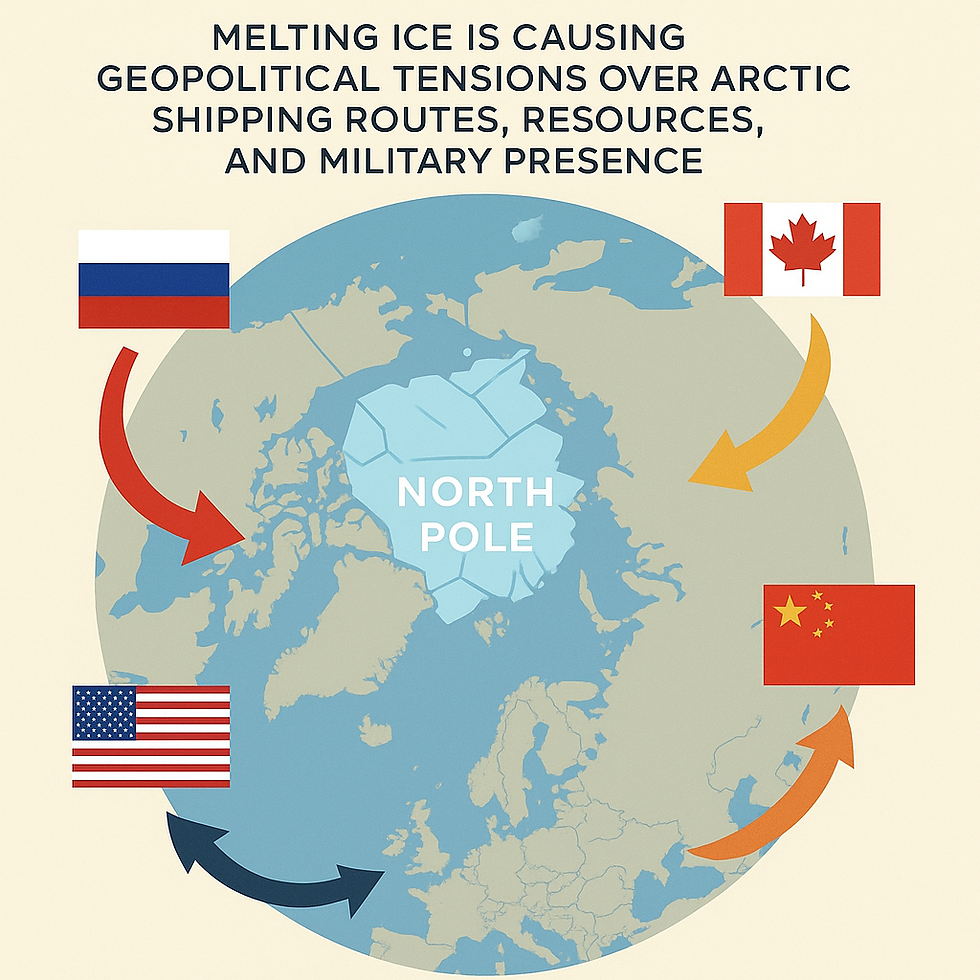Why Finland Has the Happiest Students in the World | Education Reforms That Changed Everything
- senal94
- Aug 7
- 4 min read
Updated: Aug 10

🎥 Watch Now: https://youtu.be/EvSkZZ7S5vU?si=Rz3Z8ebF_V5sIAmb
Finland has consistently ranked among the top countries in global education assessments not just for academic performance but for student well-being and happiness. While many countries chase test scores and rankings, Finland took a radically different path: one rooted in equity, trust, and holistic development. This blog explores the history, core principles, successes, and future of the Finnish education system and what the rest of the world can learn from it.
🇫🇮 A Radical Shift in the 1970s: The Birth of an Education Revolution
In the aftermath of World War II, Finland was still a relatively poor country, lagging behind in industrial and social development. But by the 1970s, the Finnish government realized that to build a modern welfare state, education reform had to be a national priority.
In 1972, they introduced the Peruskoulu (basic school) reform, establishing a comprehensive, unified school system for all children aged 7 to 16. There would be no division between academic and vocational tracks during early education. Nearly all schools became publicly funded, erasing the divide between “good” and “bad” schools.
📌 Key reform: Equal access to high-quality education, regardless of geography, family income, or ability, was made the cornerstone of the Finnish model.
📝 No Standardized Tests? No Problem.
Unlike most Western countries, Finland does not conduct national standardized tests during basic education. Students are not sorted, ranked, or publicly compared through high-stakes exams. The only standardized test is the Matriculation Examination, taken at age 18 when finishing upper secondary school.
Instead, teachers assess students continuously, using classroom-based observations, discussions, and assignments. This approach supports formative learning, not competitive ranking.
🔍 Research shows that high-stakes testing increases anxiety and reduces intrinsic motivation. Finland chose to foster internal motivation, creativity, and collaboration over exam-driven learning.
👩🏫 Teachers: The Pillars of Trust and Professionalism
Becoming a teacher in Finland is no small feat. All basic school teachers must hold a master’s degree in education, and teacher training programs are extremely selective, accepting fewer than 10% of applicants.
Once qualified, teachers enjoy full professional autonomy. They design lesson plans, create assessments, and choose materials, without the need for government inspections or prescriptive national curricula.
📚 According to the OECD, Finnish teachers are among the most trusted professionals in society on par with doctors and engineers.
👶 Why Do Finnish Children Start School at 7?
One of the most unique features of Finland’s education system is its late school starting age. Formal schooling begins at age 7, after a year of voluntary preschool focused on play, emotional development, and social interaction.
Early childhood education emphasizes curiosity, kindness, and motor skills, not reading drills or math tests. Once formal school begins, days are short (4–5 hours) and always include 15-minute outdoor breaks after every lesson.
🌱 Research in developmental psychology supports later academic instruction, arguing that early pressure may hinder long-term learning and emotional resilience.
🍎 Educating the Whole Child
Education in Finland is not just academic, it is deeply integrated with health, nutrition, and mental well-being.
Every child receives:
Free school meals
Access to healthcare and psychological services
Special education and learning assistance
Transportation support if needed
Intervention happens early and inclusively, often within the classroom, with minimal stigma. This model ensures no child is left behind, regardless of ability or circumstance.
🌍 Phenomenon-Based Learning: A Curriculum for the 21st Century
In 2016, Finland introduced a major curriculum innovation: phenomenon-based learning. This approach replaces rigid subject silos with interdisciplinary themes, such as climate change, migration, or entrepreneurship.
Students collaborate on real-world projects that encourage critical thinking, teamwork, and creativity, skills essential in a world dominated by automation, AI, and complexity.
💡 For example, a project on “sustainability” might combine biology, economics, geography, and civic studies, mirroring how problems occur in real life.
📈 The Results: Global Rankings & Happy Kids
Despite fewer exams and less homework, Finnish students perform consistently well in PISA assessments (Programme for International Student Assessment) by the OECD.
In particular, they rank high in:
Reading comprehension
Math and science literacy
Equity in performance (very small performance gaps between schools)
But beyond scores, surveys like UNICEF’s “Worlds of Influence” report rank Finnish students among the happiest and least stressed in the developed world.
🧠 Happiness and mental health are not side-effects, they are core outcomes of a well-functioning education system.
🌐 Lessons for Developing Nations
Many developing countries are stuck in exam-centric, underfunded education models. Here’s what they can learn from Finland:
Invest in Teachers, Not Just Buildings
Quality teacher training and fair pay attract the best minds into teaching.
Promote Equity Over Elitism
Public schools must be adequately funded and accessible to all.
Reduce the Exam Burden
Shift from rote memoization to formative, feedback-based learning.
Educate the Whole Child
Integrate healthcare, nutrition, and mental health into the school system.
Start Learning Through Play
Protect early childhood years from academic pressure.
🌏 While Finland’s system cannot be copied overnight, its principles, trust, equity, dignity, and joy in learning, are universal.
🟡 Final Thoughts: Rewriting the Rules of Learning
Finland’s education model challenges the global obsession with competition, rankings, and pressure. It reminds us that education should nurture peaceful, curious, and resilient human beings, not just workers or test-takers.
If we want to raise a generation that values empathy over ego, collaboration over competition, and wisdom over stress… maybe it’s time to rewrite our own rules of learning.
📣 Want More?
Visit www.the10goldenrules.com for blogs, videos, and resources that explore how we can build a happier, more peaceful world through education, equity, and emotional well-being.
#FinlandEducation #The10GoldenRules #EducationReform #HappyStudents #EquityInSchools #PhenomenonBasedLearning #NoExams #TheHappinessBlueprint #ThinkAboutIt #PeacefulLearning #TrueHappiness #JoinTheMovement




Comments